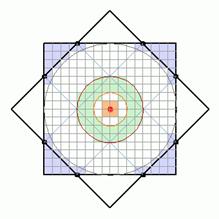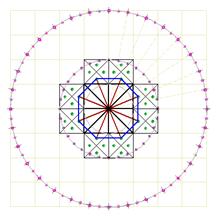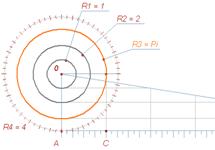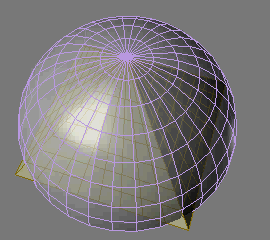
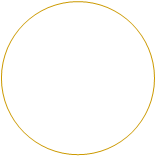

|
"Estrella" - composition analysis |
|
Ggeoglyphs in the Nazca mountains - is it just a simple ornament or the plan |

|
Introduction |
|
Yes, I am completely responsible for my words and am fully aware that such a statement would cause some surprise among the people, who are slightly familiar with the famous Pyramid Complex in Egypt, and somehow a little acquainted with the history of Civilization. This my statement, is the result of the structural analysis of the geoglyph geometry, and not the result of the ethnographic or UFO theoretical conclusions. The explanation of how it could happen so, that that this drawing appeared on the other side of the planet is not included in the plan of this article, as well as - "who", "when" and "why" has created it here. I just will try to explain what I have found in an abstract scheme, and how it brought me to this very conclusion. "Oddities" of the geoglyph, called «Estrella» («Star») in the local dialect, are catching the eye. It is located in the rocky area of Palpa, Peru, in the vicinity of the famous area of Nazca where the thousands of lines in different directions are scattered through the mountains and valleys. The huge images of flora and fauna, found in Nazca, which are visible only from the airplane, are telling us about their artificial origin. . Geoglyph is really unusual. It is standing out from the rest with the predominance of geometric shapes arranged in a single easy-to-read geometric composition, covering the area of about 1 kilometer. It is made on a flat ground, located among the a rocky terrain with difficult topography. Lines and dots of the pattern (madeby recessing the top soil layer, like the rest geoglyphs of that places,) are forming a regular geometric shapes - squares and circles. The pictures of this geoglyph, made by A. Zhukov from the different directions, have formed the basis for deeper analysis of the geoglyph. The drawings, shown in this article are accurately depicting the geometry of the geoglyph, though, the meaning of its geometry can be viewed on the scheme below, showing it's general content. By the way, this geoglyph itself is counted on such a level of understanding. |
|
© V. Kulikov |

|
First of all, the analysis of the components of the geoglyph shows that this is not just a decorative pattern. |
|
|
Chapter 1. Informative and semantic features of the composition. The geoglyph consists of regularities, which indicating, that the elements used therein are informative, and their location in the general scheme confirms that they are not random. Semantic features of the elements are indicating on the content and illustrative role of the whole image. Obviously, that geoglyph was designed specifically for reading it. |
|
|
Chapter 2. Nested or recursive system. In addition, these geometric regularities, prevailing in the scheme, are forming the definite rules, that are specifying the logical direction. It means, that this geometric scheme has some vectors, in the direction of which the composition can be developed further, according to these rules. The ability of the system to its further development is also confirmed in the analysis. Thus, it has dynamic properties, ability to develop. And the instructions to its development are hidden in the same composition. |
|
|
Chapter 3. Polygons and squaring the circle. The general composition demonstrates the properties of the two opposing geometric systems - orthogonal and radial. Both of these systems interact and affect each other, causing internal stress in the system and the aspiration to resolve the conflict. Structural changes, taking place at the same time, are transforming the whole composition to another level, and the process is repeating. The interaction of these two systems is based on specific rules, formulated by the general laws of the system. These rules in combination with the dynamic and recursive properties are creating the conditions for the development of the processes inside the system as well as the outside of it. |
|
|
Chapter 4. Circles and their perimeters. Circles, included in the composition, are adding the new guidelines and new communications of the rectangular and polar systems. During the analysis, the interesting ratio of the circumference and radius was revealed. Also, there focusing of the geoglyph on solving the problems of squaring the circle, based on an irrational number "Pi", is confirmed. |
|
|
Rectangular and radial system - are the two main categories of the world structure. The general laws of interaction of spatial cells (quantum) on the two-dimensional geoglyph, can be easily projected onto the 3-dimensional space. |

